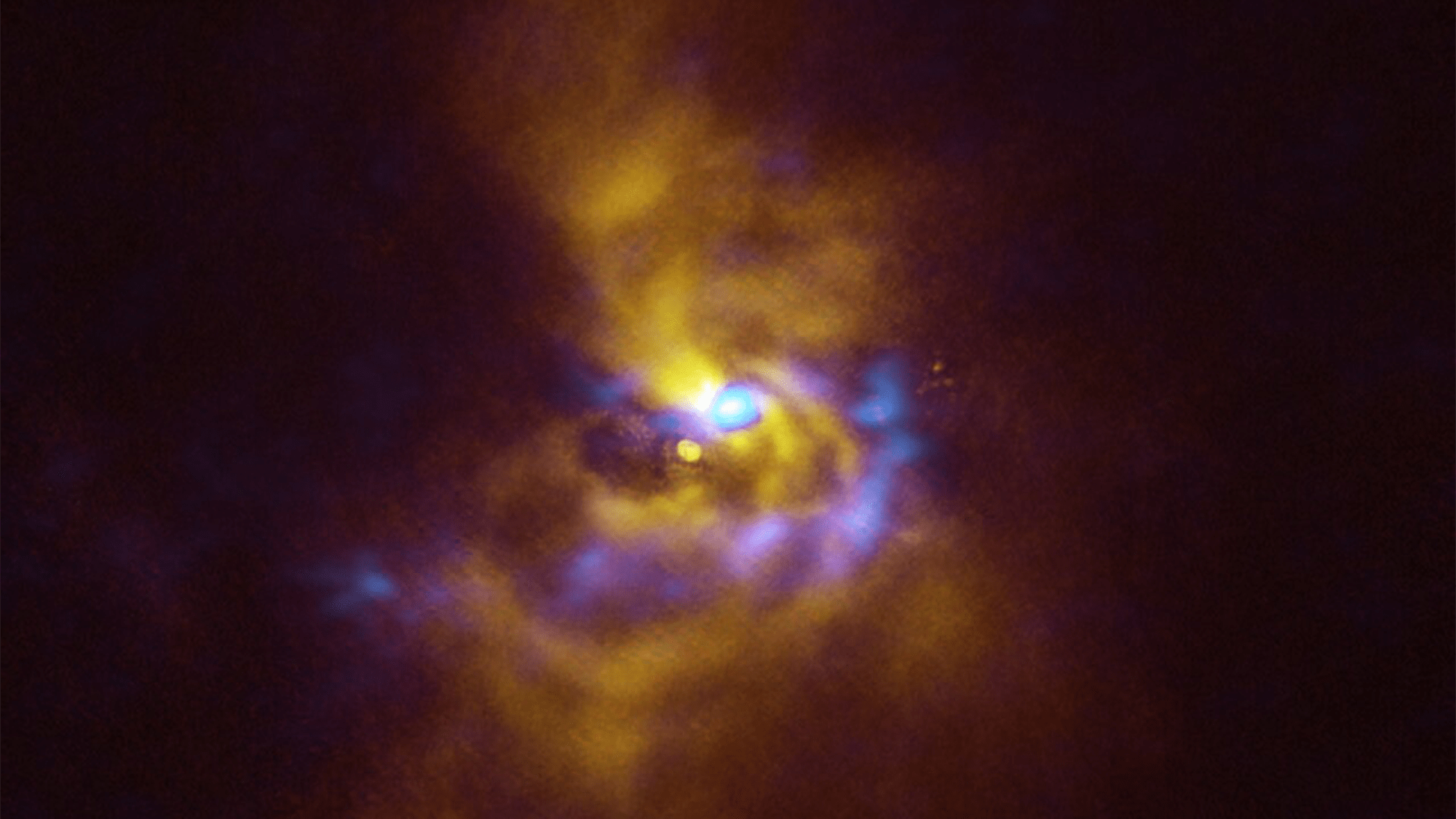

A stellar new image from the European Southern Observatory (ESO) is offering up some clues about how planets as enormous as the gas giant Jupiter could form. Researchers used the ESO’s Very Large Telescope (VLT) and an international astronomy facility called Atacama Large Millimeter/submillimeter Array (ALMA) to detect large dusty clumps located close to a young star. The clumps may collapse and one day create planets. The findings were published July 25 in the The Astrophysical Journal Letters.
[Related: Your guide to the types of stars, from their dusty births to violent deaths.]
“This discovery is truly captivating as it marks the very first detection of clumps around a young star that have the potential to give rise to giant planets,” study co-author and researcher at the Universidad Diego Portales in Chile Alice Zurlo said in a statement.
This new analysis is based on a picture obtained with the VLT’s Spectro-Polarimetric High-contrast Exoplanet REsearch (SPHERE) instrument that shows more detail of the material around the star V960 Mon. This is a young star that is located over 5,000 light-years away from Earth in the constellation Monoceros.
V960 Mon attracted astronomers’ attention in 2014 when it suddenly increased its brightness by more than 20 times. SPHERE took observations shortly after the onset of this burst of brightness, which revealed that the material orbiting V960 Mon is coming together in a series of spiral arms extending over distances bigger than the entire solar system.
Astronomers were motivated by this finding to go back and look at older observations of the same system that ALMA made. Observations made by the VLT probe the surface of the dusty material around the star, while ALMA can look deeper into deeper into its structure.
“With ALMA, it became apparent that the spiral arms are undergoing fragmentation, resulting in the formation of clumps with masses akin to those of planets,” said Zurlo.
Giant planets either form when dust grains come together in a core accretion, or when large fragments of material contract and collapse around a star by gravitational instability. Astronomers have found evidence of core accretion, but support for gravitational instability has been more difficult to capture.
[Related: Wiggly space waves show neutron stars on the edge of becoming black holes.]
“No one had ever seen a real observation of gravitational instability happening at planetary scales—until now,” study co-author and University of Santiago researcher Philipp Weber said in a statement.
The group on this study has been searching for signs of how planets form for over a decade. Future studies will hopefully unveil more details of V960 Mon and the “captivating planetary system in the making.” According to the team, the future Extremely Large Telescope (ELT) will play a key role. This new telescope is currently under construction in Chile’s Atacama Desert, and will be able to observe the V960 Mon system in even better detail.
“The ELT will enable the exploration of the chemical complexity surrounding these clumps, helping us find out more about the composition of the material from which potential planets are forming,” said Weber.
